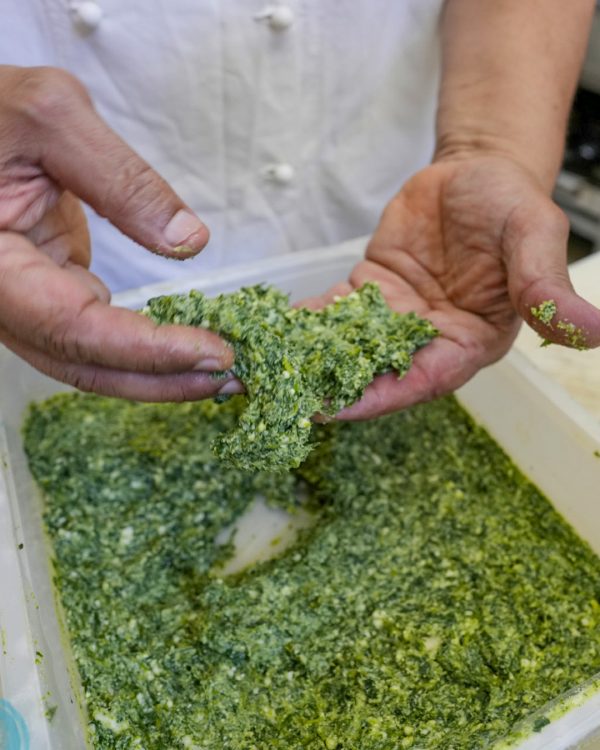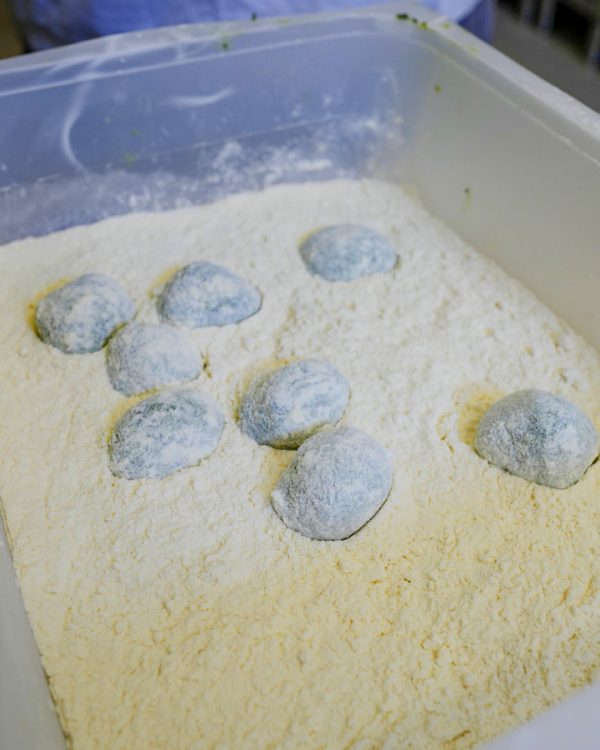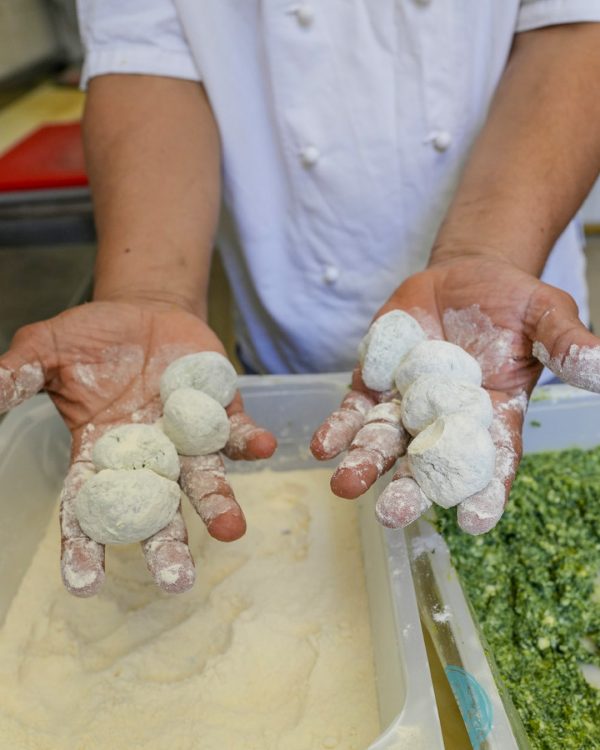Antico Falcone is not your typical Roman restaurant. It’s on the quiet side, with large half-moon windows high up on the wall, sienna-colored floor tiles and blank white walls. It is a clean, modern respite from the hustle and bustle of one of the world’s busiest tourist cities, and the food is vastly superior to the huge plates of pasta being served to value-seeking tourists.
I recently returned to Antico Falcone in my search for the perfect cacio e pepe, but during lunch, another dish caught my attention: palline al verde, an exquisite, simple preparation of spinach-ricotta balls briefly poached in water and served with a bright, barely cooked tomato sauce. It is classic Italian—simplicity married to excellence.
Back in the kitchen, chef Mimmo Galal (born in Egypt in 1962 and cooking at the restaurant since 1987), gave me a cooking lesson. The dish belongs to the tradition of pasta filling served without a pasta wrapping, often referred to as “gnudi.” The batter is straightforward: ricotta, spinach, whole eggs, salt and Parmesan. Galal rolls out golf ball-sized portions by hand, dredges them in flour, and then poaches them in simmering water for just 90 seconds. A quick-cooked tomato sauce is ladled onto a plate, followed by the palline. Almost lighter than air, freshly sauced and with a punch of Parmesan, this recipe makes the A list.
But back at Milk Street, we encountered a problem. Our palline fell apart in the poaching water, probably due to the consistency of our store-bought ricotta. Draining the ricotta of excess liquid helped, but the addition of a quarter cup of flour seemed necessary. But, no, this weighed down the palline—they were sinkers! We ditched the flour, upped the amount of spinach and decreased the ricotta, and finally, we had a light texture that held together. We also added some pecorino to the Parmesan to bolster flavor, and we found that a one-hour stay in the fridge was helpful to keep the palline intact. For cooking time, 90 seconds proved insufficient, since the centers emerged undercooked and pasty. A full 8 to 10 minutes seemed better, or until a skewer inserted into the center meets resistance. (One reason the cooking time is extended is that we cook all 20 palline at one time; Antico Falcone prepares this dish to order.)
Although we often think of a traditional Italian tomato sauce as an all-day, long-simmered affair, the Romans often opt for a can of tomatoes and the simplest of preparations. A little EVOO, two cloves of garlic, a small can of whole tomatoes and some basil, and in 10 minutes of simmering, you are good to go. And please note that the whole garlic cloves are cooked in the oil for just two minutes and then discarded! This is classic Italian technique shared by every cook I have ever worked with in Italy, despite the naysayers who claim that slam-bang garlic flavor is the cornerstone of Italian cooking. It ain’t!
Spinach and Ricotta Dumplings in Tomato Sauce

1. As we learned at Trattoria Antico Falcone in Rome, palline (also known as gnudi) are formed from a spinach ricotta mixture, each shaped into a ball.

2. Lightly dredging the palline in flour before cooking creates a coating that helps hold them together as they simmer, while also giving the sauce a surface to cling to.

3. As chef Mimmo Galal demonstrates, it’s important to remove excess flour from the palline before cooking by gently shaking off the flour after they’ve been dredged.






